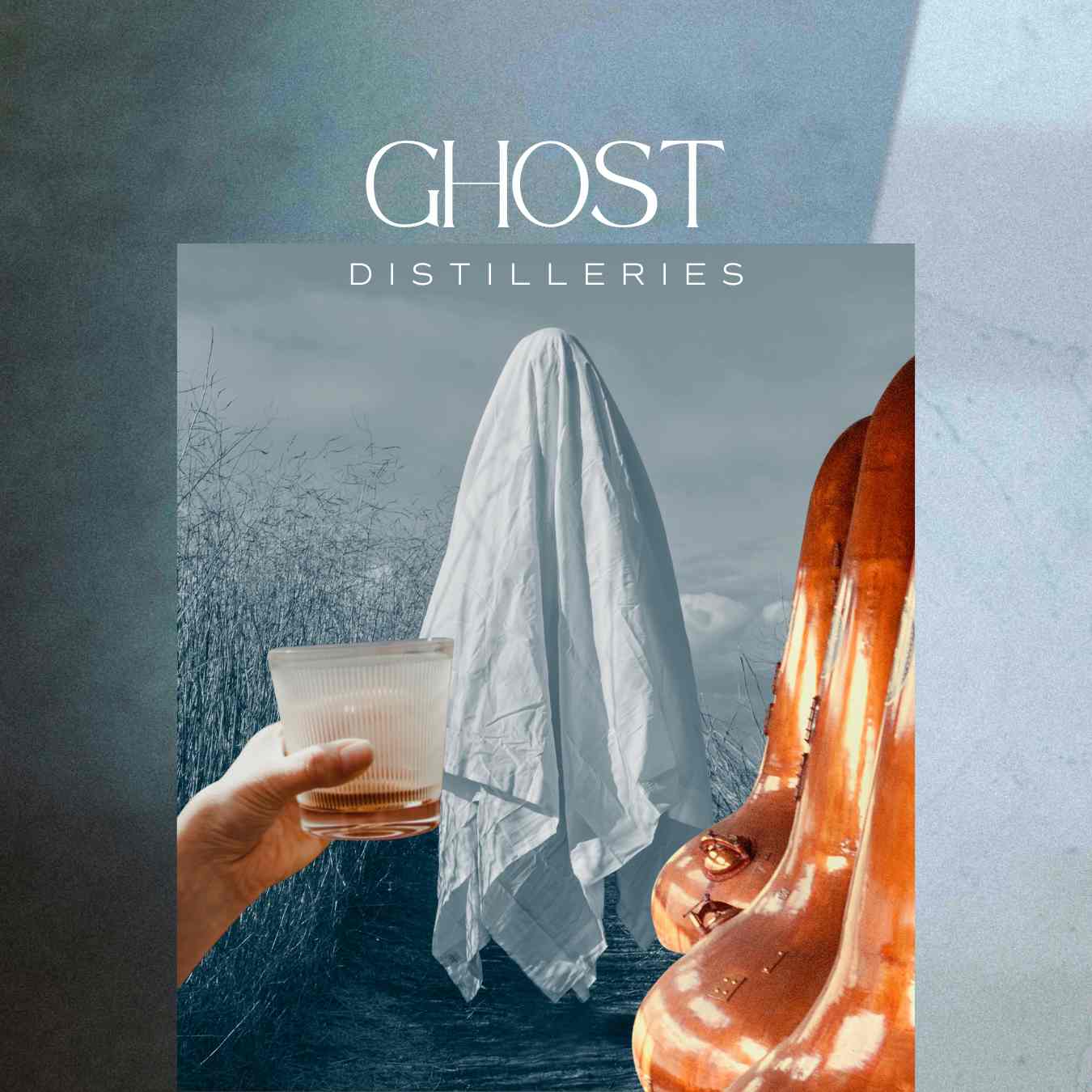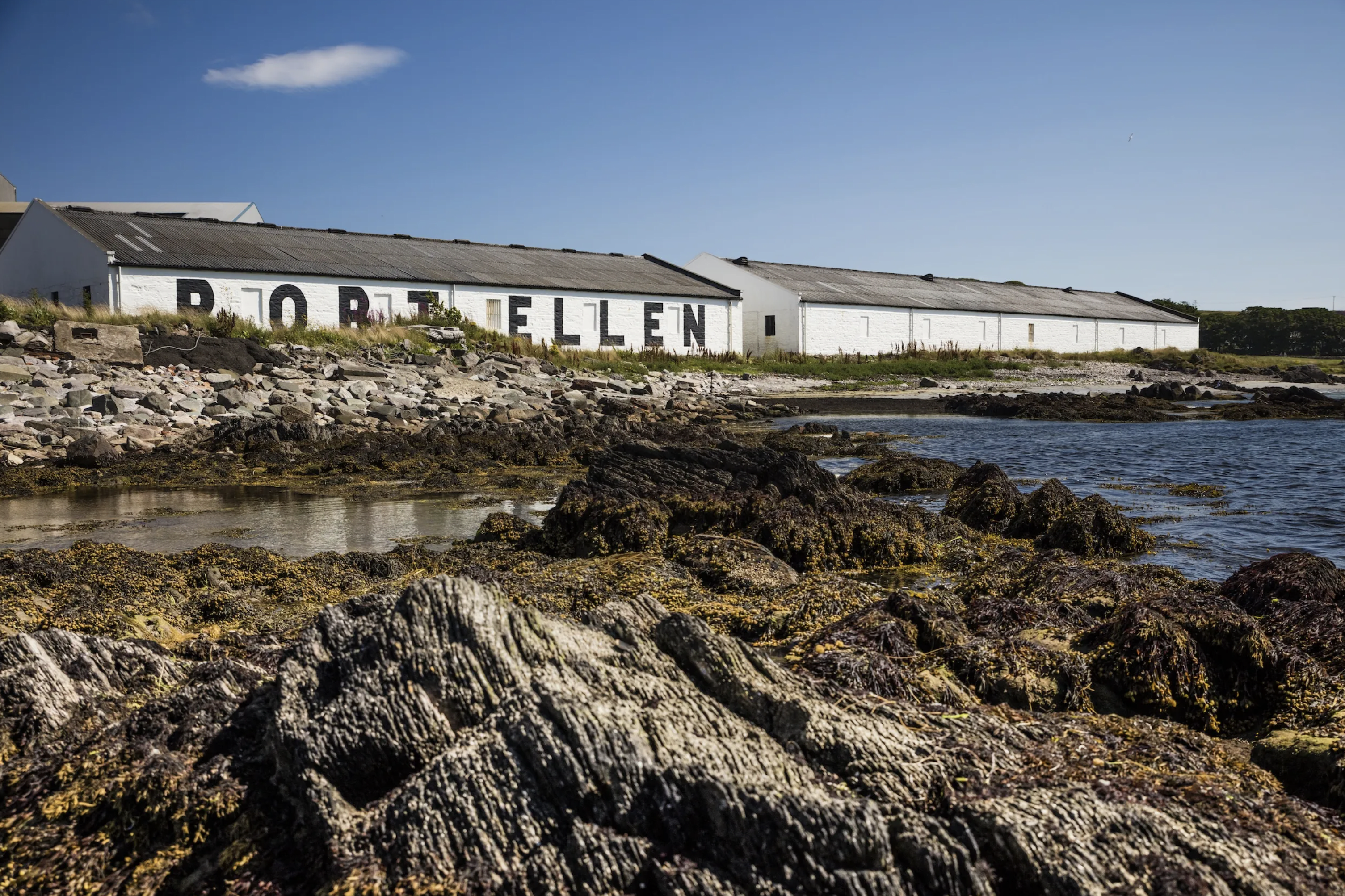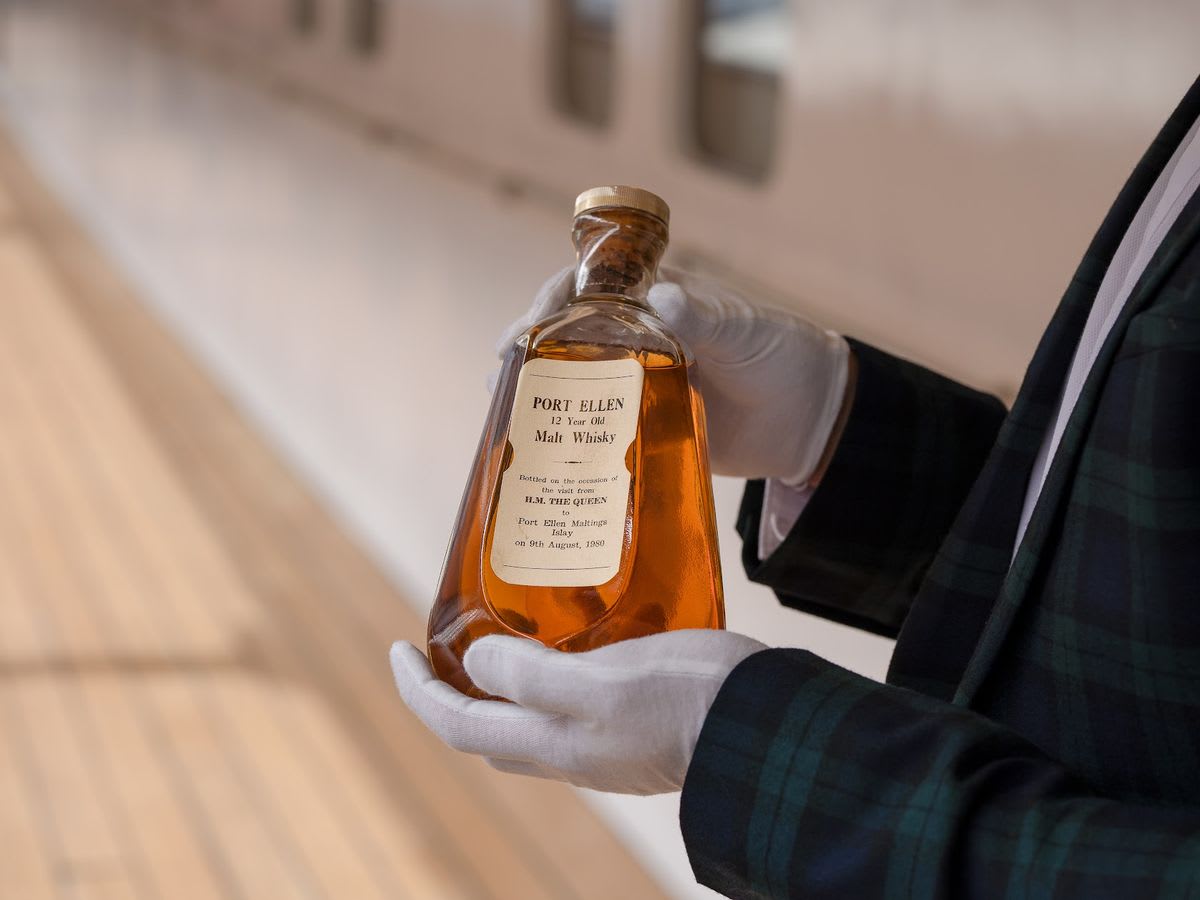The world of whisky is filled with rich history, captivating stories, and undeniable charm.
Among its most enigmatic are the ghost distilleries - once-thriving establishments that have since vanished. What they have left behind is a beautiful contradiction - a boom and bust legacy that threatens to repeat itself as well as an ever-diminishing amount of now highly prized casks.
In this exploration, we delve into the intriguing phenomenon of ghost distilleries and the enduring spirit that keeps their memory (and value) alive.
What we found was that the legacy of closed sites isn’t just creating exited whispers about what remains amongst whisky enthusiasts. It’s part of a deafening clamour for more Scotch, be it from now silent stills or new distilleries, which could well have the reverse effect everyone hopes for…


What is a ghost distillery?
Ghost distilleries are plants that have ceased production but whose whiskies still exist until stocks run out.
There are more of them that you probably thought too. Some have disappeared due to economic hardships, fires and other calamities but the majority were the result of very conscious commercial decisions to close.
Today, there are over 30 known ghost distilleries in Scotland, whose liquid legacy are highly sought-after for their quality, scarcity, cultural value and in a very modern phenomenon – their investment value.
Just like the rest of Scotch, Ghost distilleries can be classified into two main types based on what they made; Grain and Malt. Most of the ghost distilleries we hear of today made malt whiskies and the majority of the interest around reviving these old plants (and hype over the remaining stock) lies in them.
That said, there were several noteworthy grain whisky distilleries (Carsebridge, Caledonian, Cambus, and Port Dundas to name a few) that fell silent and whose contribution as bulk liquid used in Blends was significant. It’s fair to say they have a niche but dedicated following in their own right - but that’s a story for another day.


Why did so many Scotch distilleries get mothballed?
Following a decade of overproduction, the most significant culls of distilleries began in the 1980’s itself, when Diageo (then United Distillers/Guinness PLC) closed many of its Speyside malts and other select operations.
These included Banff, Coleburn, Convalmore, Pittyvaich, and most famously Port Ellen. Some distilleries were either deemed too small to be profitable, or did not meet the desired flavour output desired by influential blenders. Most however, need to be understood with a broader lens and against an industry-wide excess of inventory. There was even an unfortunate moniker coined to describe the situation, the Whisky Loch.
As to their fate? Some simply closed their doors and nothing was done to the sites. Some were less fortunate, stripped for parts and sellable assets. Others yoyo’d in the doldrums of corporate decision making – for example the Imperial distillery was closed and reopened several times before finally being demolished by its new owners, Pernod Ricard.
There’s even the odd occasion, like Dallas Dhu, where the building now has the peculiar fate of being a non-working distillery museum. An ode to production heritage and category education in some eyes, a memorial to poor future planning in others…
A liquid legacy –
To state an obvious fact, but for those whose understanding of distillery operations has never really extended beyond understanding the need for some barley, a still, a barrel and some bottles… When a distillery stops producing, it doesn’t then stop having whisky maturing.
It’s not a batch-by-batch process like gin, where a stockpile may last a month or two of sales. If Glenfiddich closed today, there would be millions of barrels to deal with. It takes days to make the New Make Spirit, but once laid to rest, it will mature for decades and the role of warehouse management and inventory control is a task of epic proportions. While older stock isn’t necessarily better, maturing scotch tends to be seen as an appreciating asset.
This liquid legacy is where collectors and drinkers find shared excitement. If they can get hold of it that is.
Independent whisky merchants who bought bulk spirit or parcels of casks such as Gordon & MacPhail, Duncan Taylor, and Douglas Laing have played a significant role in preserving these ghost distilleries' legacies. They have kept a small but steady supply going over the years. Occasionally, it’ll be the new owners who are drip feeding the supply – and suffice it to say that as stocks dwindle, the value goes up.
So much of the perceived value is in the detail of who releases it and how it comes onto the market.


Liquid fortunes or fool’s gold?
While there is sentimental value and some drinkers have a personal connection to a defunct distillery, it’s not nostalgia that’s driving the interest. It’s because stock from Ghost distilleries appeal to all three types of whisky buyer: the drinker, the collector, and the investor.
The drinkers
Drinkers are interested as defunct distilleries often have rich histories, and unique flavour profiles. Some are now significantly aged expressions, some have production methods that may not be carried out anymore, use barley and yeast varieties that are now out of favour or equipment that is now deemed inefficient and no longer used but created a certain charm in the spirit. That makes them unique.
Even if that isn’t the case, each distillery is different and the countless minor variances amount to a huge difference in end flavour outcome that cannot be replicated elsewhere. In turn, that creates a compelling drinking experience worth seeking out.
The other reason drinkers are looking for these bottles is down to trends and when it comes to capitalising on that - supply and demand is everything. Take the hugely peated Islay style as an example. It didn't have much consumer appeal forty years ago, but today ‘peat freaks’ and ‘smoke heads’ seek its distinct character with fervour.
The likes of Port Ellen were not de rigueur back then, but they are a prized bottle for many in today’s market.


The collectors
I'll accept that historical significance plays a part in why some collectors seek out ghost whiskies and it’s true that owning a bottle can provide a tangible connection to the past. Maybe there’s even a sense of nostalgia and appreciation for the craftsmanship that went into producing these whiskies “back then”.
But it’s disingenuous to think that’s the main driver at play - rarity and exclusivity are the significant motivators. Whisky from defunct distilleries is scarce, which makes it more valuable and desirable and for a collector, owning (and tasting) something rare and exclusive that others cannot easily acquire is part of the joy of collecting. For many it's the central motivation.
The investors
It’s easy to see why investors look at rare bottles as a valuable opportunity. Take the names that are so frequently in the press as just one example - Brora, Port Ellen and Rosebank are highly valued in today's secondary market. One Brora reached record prices at auction in 2019, with a 40-year-old bottle selling for a staggering £54,450.
Prices fluctuate over time but overall, the direction continues to rise namely due to their rarity and with some being enjoyed along the way, the number remaining for acquisition is only getting smaller.
Provenance is vital though. While those seeking to drink may not be as fussy (as the value is the liquid inside the bottle, not that it's sitting on their shelf), many collectors prefer official releases over independent bottlings. As a result, the average price for distillery bottlings is still far higher than for third party (independent) releases. In the investment circles, those are the ones being hunted.


Re-incarnation or history repeating itself?
Take that trio of names once again, Brora, Port Ellen and Rosebank and the next chapter for ghost distilleries becomes even more interesting.
Their impending reincarnation have each recently been announced. Rosebank's new facility looks amazing (renderings below) while there will be a £35 million restoration going into Brora alone, with the team intent on preserving its heritage while modernising its facilities. A new release may still be up to a decade away, but the slew of announcements and the revival of these once-derelict distilleries seem to have further fuelled interest in the existing ghost stock, not dampened it. No doubt, the clamour for their first few batches will be intense.
With a broader lens - they could be the first of many being revived as new owners look to buy instant gravitas (and ease their way through planning permissions) than start from scratch elsewhere. Resuscitating an old plant also brings back a wealth of heritage and in a world where nostalgia and history can be turned into real value and a point of difference, it presents a unique opportunity.


A word of caution.
Ghost Distilleries may have a fascinating legacy but as we all get excited about that history and what’s imbued into the remaining stock, it’s key to remember the reason why they closed in the first place. There is a lesson that must be heeded.
It’s important to ask if we are headed to a new era of overproduction and if the demand isn’t there – will there be a return of the famed whisky loch?
It’s not far-fetched to think it’s possible. Whisky is on the up and gathering pace rapidly. Almost all the major players have announced expansion on their sites and an increase in production capacity. The Glen Turner grain plant plans to construct giant new warehouses in the coming year, Pernod Ricard is pumping in close to £90 million at its Aberlour and Miltonduff distilleries. Dalmore and Kilchoman are both undergoing major expansions, while half a dozen new distilleries will open their doors this year, including the much-anticipated Port of Leith, Eden Mills, and Dunnet Bay.
I’ve seen countless planning applications in the works and some breath-taking renderings for what the buildings will look like too. And that’s before the slew of capacity increasing building works that have been implemented since 2018.
But is the demand going to be there when the whisky is ready for release?
So little is assertively challenged about where this predicted thirst is coming from. Increased exports, younger generations rediscovering Scotch and more inclusive marketing that broadens the appeal all sounds great. But each is easier said than done.
The jury is out as to whether this is a case of better forward planning based on a better understanding of drinkers, or the reckless optimism of an industry that’s currently feeling buoyant.


Moreover, are we just going to ignore the influence of rampant investment talk is having on the valuations and future P&L predictions of mid-tier distilleries? Some of the reason investors are looking at Whisky as an asset is because of the uncertainty of the financial markets. That's fine, but lest not forget the point of an investment is to see a return and at some point, the trend amongst investors will be to “exit”.
It's unclear what will happen to their assets (from shares in crowd funded distilleries to casks and oversized home collections) if they have not reached the desired value when they do sell up. It has the potential to send a shockwave that will shake the foundations of many a warehouse…
And so, as many have asked already it begs the question; How long can a blind eye be turned about the cask investment schemes? Commentators and national press are all saying it's an issue, but the industry hasn't legislated against it yet. The main reason there are so many cowboys pitching crazy returns and forcing a price inflation on bottles is because the whisky investment space is largely unregulated (by comparison to the financial market). Many have predicted a reckoning is due.
If both issues materialise to some degree - the drinkers aren’t there and there is an expected re-alignment as well as the consequences of courting the investment sector - much tougher questions will need to be answered.
Namely how far will the overinflated value placed on all distillery offerings, let alone the ghost stock, plummet? When it does, it may be untenable not to close plants as the returns will not match the promises made to shareholders.
Whisky Loch 2.0 sounds extreme but look at Craft Beer last decade and look at Craft Gin right now. There has been a lot of speculative investing based on projected growth that hasn't worked out. Like vultures over a carcass, someone’s demise is someone else’s fortune and the administrators are having at it.
As always with whisky, only time will tell.
What’s for certain is that there’s nothing quiet about the questions silent stills raise. While they offer a captivating taste of the past, they also represent a foreboding reminder of the perils of overestimating your popularity.



